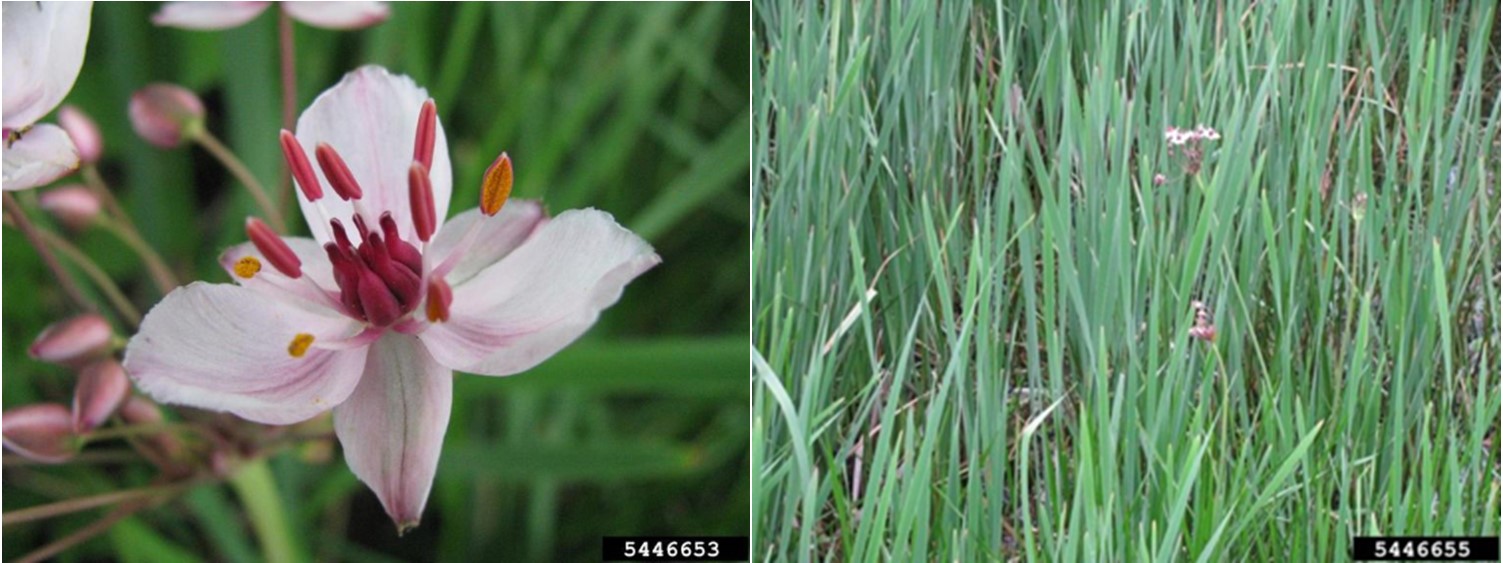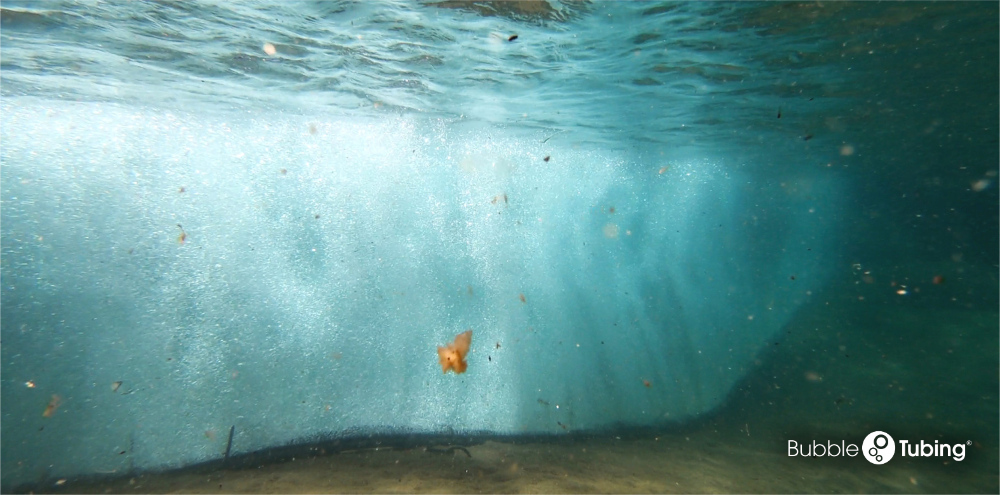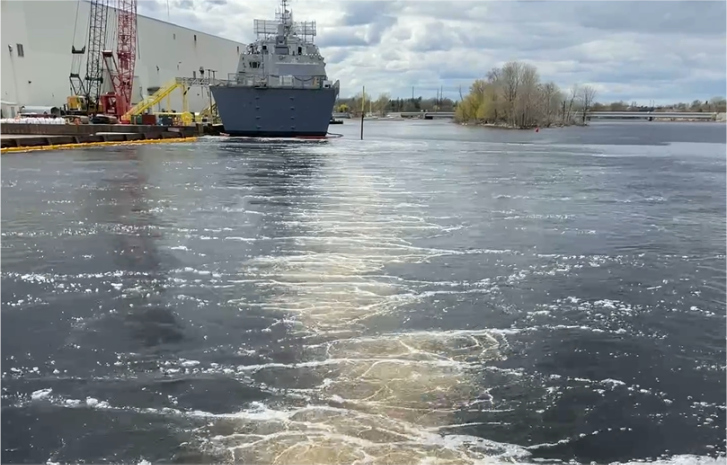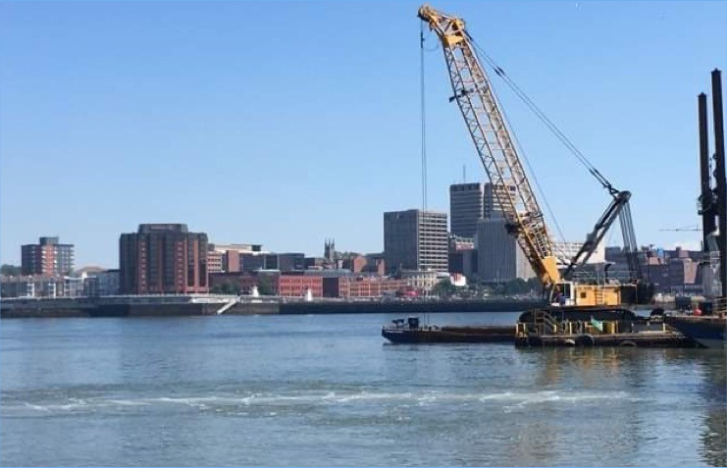Flowering Rush Control Using Bubble Curtains
Invasive Species Control Study by the US ARMY CORPS OF ENGINEERS
An invasive species commonly known as Flowering Rush (Butomus Embellatus L.) is a perennial flower non-native to America. It grows 1-4 feet along the shoreline. It is now established in all great lakes along the border between the United States and Canada. This species not only prevents native plants from developing, it can also have a negative impact on salmonid species. It creates a physical barrier in rivers preventing fish from coming back to their mating ground for reproduction or by creating a dangerous zone where predators can attack the salmon more easily as they are hidden by the flowering rush plants. Finally, this invasive species also reduces recreational use access.
It was demonstrated during a lab test that a certain type of herbicide (diquat) is effective against Flowering Rush, but a minimum amount of contact is required in order for it to be effective. At the time, numerous field tests were conducted with inconclusive results. Some field tests failed because the water exchange within the water bodies were not taken into consideration and therefore did not allow sufficient contact between the herbicide and the targeted plant for it to work. This is why in this case it was important to test a retention option in one of the locations chosen. A physical Barrier curtain was eliminated because of the inconvenience of installation and it being too susceptible to damage by the current. The Bubble Curtain was selected as a barrier because of its easiness of installation and maintenance, and that it can be repositioned as needed to allow for the passage of boats.
The main objective of this study was to evaluate the effectiveness of the Bubble Curtain to extend the water exchange time within potential flowering rush treatment areas.
How Does a Bubble Curtain Work?
Bubble Tubing® immersed in water creates a curtain of fine bubbles, which rise to the surface, expand and act as a barrier. Strategically positioned, the bubble curtain creates a vertical current which can reduce water exchange between two zones clearly identified. Furthermore, the bubble curtain allows the passage of boats and marine wildlife while reducing water exchange in the desired location.
Products Used:
Custom bubble curtain system using 1 inch diameter Bubble Tubing®.
- Bubble Tubing® diffusers (4 sections to create a double curtain)
- 2x Diesel Air compressor Doosan HP375 and Doosan HP375WCIUQ (375 CFM Rating, 150 PSI pressure rating) – Not provided by CPP
- Other hardware
Bubble Tubing® is third party certified, industrial linear air diffuser typically used for aeration, de-icing and bubble curtains. It is designed and manufactured in Canada to our highest standards and specifications.
Air bubble diffusers such as Bubble Tubing® produce a large homogenous dispersion of small air bubbles which are typically between one (1) to three (3) mm in diameter. The fine bubble size and density ensures that coalescence is avoided and that an even distribution of bubbles will rise from the bottom to the surface of waterways, rivers, lakes or reservoirs to act as barrier curtains.
Compressed air enters the tubing, creating an inner pressure. It is released through perforations found along both sides of the entire length of tubing. The ensuing bubbles are efficient in preventing clogging and fouling (typically found in porous diffusers), of the entire length of tubing. The released air forms a bubble curtain of uniformed and evenly dispersed fine bubbles.
The Tests
A nontoxic pink dye was mixed with the herbicide to allow an evaluation of the CET (concentration exposed time). It is called water tracing and a fluorometer is used to measure dye concentration in samples collected at multiple collecting points and also at different depths.
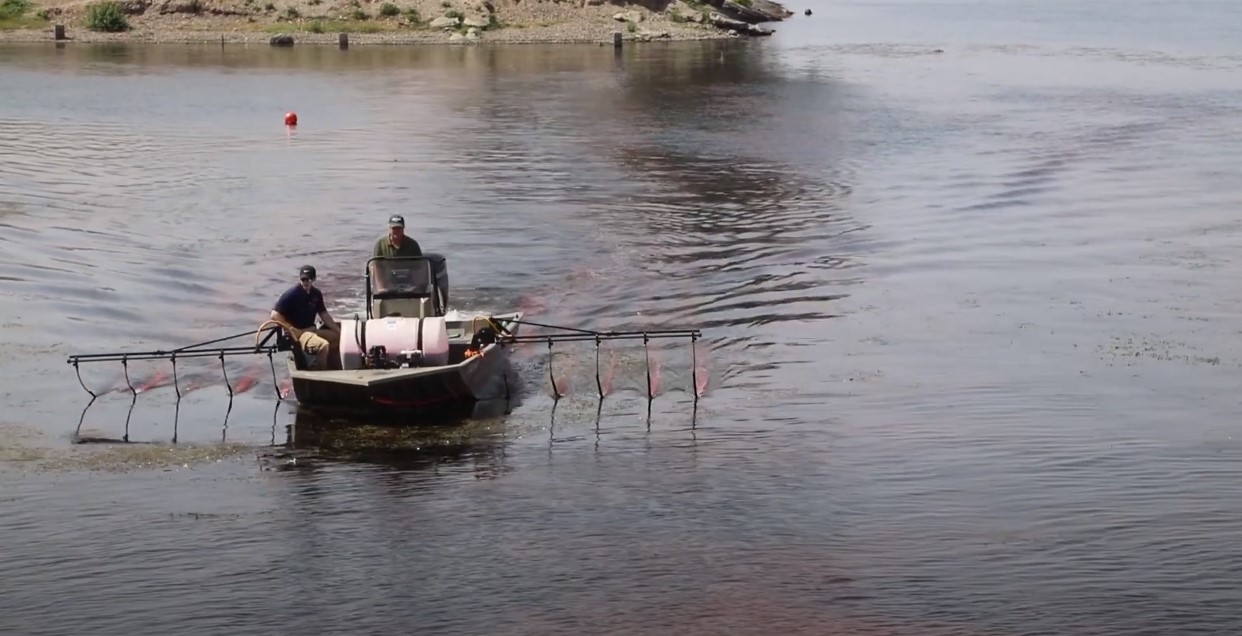
Three tests were conducted at the site to evaluate the bubble curtain efficacy. The first one was done without the use of a bubble curtain as a control test. Two more tests were conducted with the bubble curtain in operation on different configurations.
The results are calculated by half-life which means the amount of time it takes to reduce the concentration of the dye by half.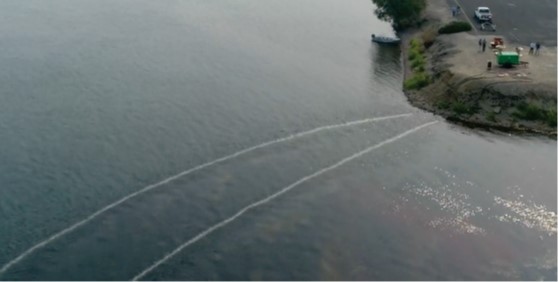
– Without bubble curtains: The half-life of the diquat treatment without the use of a bubble curtain was recorded at 3.8 hours.
– Bubble Curtain configuration #1: The half-life of the herbicide treatment using the configuration #1 of the bubble curtain was 7.6 hours. The bubble curtain was able to reduce the water exchange significantly and therefore improve the efficacy of the treatment by increasing the contact time between the treatment and the invasive aquatic plants in the area.
– Bubble Curtain configuration #2: The same results occurred under configuration #2 with a half-life of 7.06 hours. The bubble curtain was able to reduce the water exchange significantly. This test demonstrated even more the efficacy of the bubble curtain because the application of the herbicide was achieved in a less than ideal situation. At the time of the application, strong winds were blowing away from the site. Those winds created waves that were pushing dye out of the treatment site. Despite those elements, the half-life was still almost double that of the control application without bubble curtain. In a normal situation, a standard herbicide treatment with no bubble curtain would have been postponed, due to the strong winds.
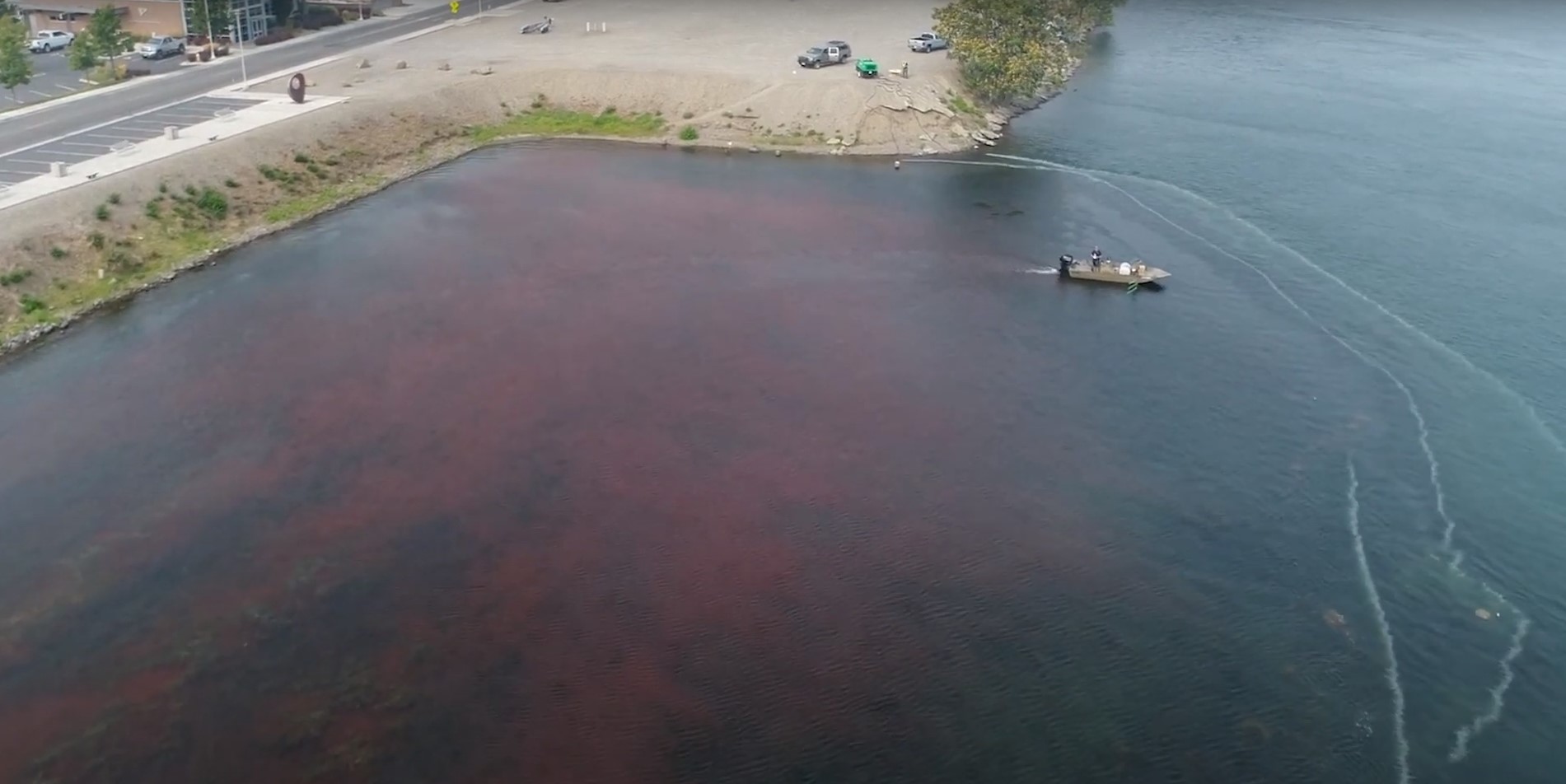
In conclusion, this study clearly demonstrated that the use of Bubble Tubing® as a bubble curtain is effective for containing a liquid within an area for a period of time. By using the bubble curtain, the retention time was doubled compared to the same conditions without a curtain. Bubble curtains can also be used to contain or mitigate larger size elements such as Algae, plastics, jellyfish, silt, etc.
US ARMY CORP OF ENGINEERS produced an educational video on this study. Happy viewing!
Contact us for an evaluation of your project : Click Here
